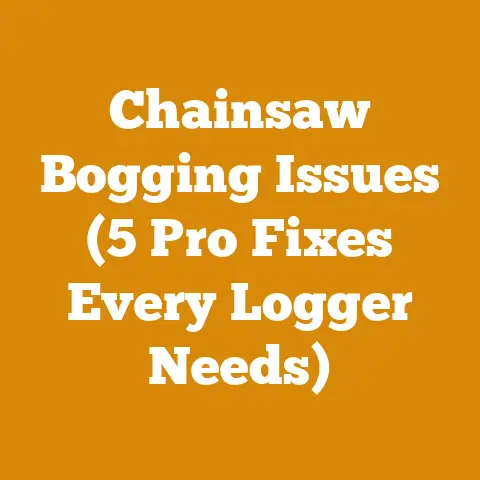Stihl Fuel Tank Vent Replacement (3 Expert Tips for Durability)
Stihl Fuel Tank Vent Replacement: (3 Expert Tips for Durability) – A Cost-Conscious Approach
Have you ever been in the middle of bucking up a pile of oak, the air thick with sawdust and the satisfying roar of your Stihl chainsaw, only for it to sputter and die? More often than not, the culprit is a seemingly insignificant part: the fuel tank vent. It’s a tiny component with a huge impact. A faulty vent can lead to a vacuum in the fuel tank, starving your saw of fuel and bringing your project to a screeching halt. But before you rush out to buy a new chainsaw, let’s talk about replacing that vent and, more importantly, how to do it right to save money and frustration in the long run.
Understanding the Importance of the Fuel Tank Vent
The fuel tank vent on your Stihl chainsaw is a small, often overlooked component, but it plays a critical role in the engine’s performance. Its primary function is to allow air into the fuel tank as the fuel is consumed, preventing a vacuum from forming. Without proper venting, the vacuum can restrict fuel flow to the carburetor, causing the engine to stall, run poorly, or not start at all. This can lead to wasted time, increased fuel consumption, and even damage to the engine if left unaddressed.
The vent is typically located on the fuel tank cap or near the fuel line connection. It may be a simple one-way valve or a more complex design with a filter to prevent debris from entering the fuel tank. Regardless of the design, the vent must be kept clean and functioning properly to ensure optimal chainsaw performance.
Why Fuel Tank Vents Fail
Fuel tank vents, despite their simple function, are prone to failure for several reasons:
- Debris and Contamination: Sawdust, dirt, and other debris can clog the vent, restricting airflow. This is especially common in dusty environments or when the chainsaw is not properly maintained.
- Fuel Residue: Over time, fuel residue can build up in the vent, hardening and obstructing the passage of air. This is more likely to occur with fuels that have a high ethanol content.
- Physical Damage: The vent can be damaged by impacts or exposure to harsh chemicals. Cracks or breaks in the vent can allow air to leak, which can also affect fuel flow.
- Age and Deterioration: Like any rubber or plastic component, fuel tank vents can deteriorate over time due to exposure to heat, sunlight, and fuel. This can cause the vent to become brittle and prone to cracking.
Recognizing the Signs of a Faulty Fuel Tank Vent
Identifying a faulty fuel tank vent early can prevent more serious problems and save you money on repairs. Here are some common signs to watch out for:
- Engine Stalling: The engine stalls frequently, especially when the fuel level is low.
- Poor Performance: The engine runs rough, lacks power, or hesitates during acceleration.
- Difficulty Starting: The engine is hard to start, especially after it has been running for a while.
- Fuel Tank Deformation: The fuel tank collapses or becomes misshapen due to the vacuum inside.
- Hissing Sound: A hissing sound is heard when the fuel cap is removed, indicating a vacuum in the tank.
If you notice any of these signs, it’s a good idea to inspect the fuel tank vent and consider replacing it if necessary.
The Cost of Ignoring a Faulty Vent
Ignoring a faulty fuel tank vent can lead to more serious problems and higher repair costs down the road. Here are some potential consequences:
- Engine Damage: A restricted fuel supply can cause the engine to run lean, which can lead to overheating and damage to the piston, cylinder, and other components.
- Carburetor Problems: A faulty vent can cause the carburetor to malfunction, requiring cleaning or replacement.
- Increased Fuel Consumption: A poorly running engine will consume more fuel, increasing your operating costs.
- Downtime: A chainsaw that is constantly stalling or running poorly will slow down your work and reduce your productivity.
By addressing a faulty fuel tank vent promptly, you can avoid these problems and keep your chainsaw running smoothly for years to come.
Don’t just grab the cheapest option off the shelf. This is an area where quality matters.
Why Quality Matters:
A cheap, poorly made vent might seem like a good way to save a few bucks upfront, but it can cost you more in the long run. Inferior materials can degrade quickly, especially when exposed to gasoline and the elements. They might not seal properly, leading to leaks or inconsistent fuel flow. I’ve seen firsthand how a flimsy vent can fail within a few weeks, leaving you right back where you started.
OEM vs. Aftermarket:
You’ll typically have two options: Original Equipment Manufacturer (OEM) vents from Stihl themselves, or aftermarket vents from other manufacturers.
- OEM Vents: These are designed specifically for your Stihl chainsaw model. They are generally more expensive, but they offer the best fit, performance, and durability. You can usually find them at Stihl dealerships or authorized online retailers.
- Aftermarket Vents: These are often cheaper than OEM vents. Some aftermarket brands offer decent quality, but it’s crucial to do your research. Read reviews and look for brands that are known for producing reliable chainsaw parts. Be wary of excessively cheap options, as they are often made with inferior materials.
Finding the Right Part Number:
Before you buy anything, make sure you have the correct part number for your specific Stihl chainsaw model. You can usually find this information in your owner’s manual or by searching online using your chainsaw’s model number. Using the wrong vent can lead to improper sealing and fuel flow problems.
My Recommendation:
In my experience, it’s almost always worth the extra cost to go with an OEM vent. The peace of mind knowing you’re using a part that’s specifically designed for your chainsaw is worth the investment. However, if you’re on a tight budget, do your research and choose a reputable aftermarket brand.
Cost Breakdown:
- OEM Stihl Fuel Tank Vent: $5 – $15 (depending on model)
- Aftermarket Fuel Tank Vent: $3 – $10 (depending on brand and quality)
Example:
Let’s say you have a Stihl MS 271 Farm Boss chainsaw. The OEM fuel tank vent (part number 0000 350 5800) typically costs around $8-$12. A comparable aftermarket vent might cost $5-$8. While the aftermarket option seems cheaper, consider that you might have to replace it sooner, potentially costing you more in the long run.
Expert Tip #2: Proper Installation for a Long-Lasting Seal
Once you’ve got the right replacement vent, the next crucial step is proper installation. A poorly installed vent can leak, causing fuel wastage and potentially creating a fire hazard.
Tools You’ll Need:
- Screwdriver (usually flathead)
- Needle-nose pliers (optional, but helpful)
- Clean rag
- Gloves (to protect your hands from fuel)
Step-by-Step Installation Guide:
- Safety First: Before you start, make sure your chainsaw is turned off and the engine is cool. Disconnect the spark plug wire to prevent accidental starting. Work in a well-ventilated area, away from any open flames or sources of ignition.
- Locate the Vent: The fuel tank vent is usually located on the fuel tank cap or near the fuel line connection to the tank. Consult your owner’s manual if you’re unsure of its location.
- Remove the Old Vent: Depending on the design, the vent might be held in place by a friction fit, a small clip, or a screw. Use the screwdriver or pliers to carefully remove the old vent. Be gentle to avoid damaging the surrounding plastic.
- Clean the Area: Use the clean rag to wipe away any dirt, debris, or fuel residue from the vent opening. This will ensure a good seal for the new vent.
- Install the New Vent: Insert the new vent into the opening. Make sure it’s oriented correctly, following the instructions in your owner’s manual or the diagrams on the vent itself. If it’s a friction fit, press it firmly into place. If it has a clip or screw, secure it properly.
- Test for Leaks: Once the new vent is installed, fill the fuel tank with a small amount of fuel. Carefully inspect the vent area for any leaks. If you see any leaks, remove the vent and check for proper seating and alignment.
Common Mistakes to Avoid:
- Over-tightening screws: If the vent is secured with a screw, don’t over-tighten it. This can strip the threads in the plastic and damage the vent.
- Using excessive force: When installing a friction-fit vent, don’t force it into place. If it’s too tight, try lubricating it with a small amount of fuel.
- Ignoring the orientation: Some vents have a specific orientation. Make sure you install it correctly to ensure proper venting.
- Contaminating the vent: Keep the new vent clean during installation. Avoid touching it with dirty hands or tools.
My Experience:
I once rushed through a vent replacement and didn’t clean the area properly. The new vent didn’t seal correctly, and I ended up with a leaky fuel tank. It was a messy and frustrating experience. Now, I always take my time and pay attention to the details.
Cost Savings:
Proper installation can save you money in several ways:
- Preventing fuel leaks: A leaky vent can waste fuel, increasing your operating costs.
- Avoiding engine damage: A poorly sealed vent can lead to fuel flow problems, potentially damaging the engine.
- Reducing the need for future repairs: A properly installed vent will last longer and reduce the likelihood of future problems.
Example:
Let’s say you typically use 5 gallons of fuel per week when cutting firewood. If a leaky vent causes you to waste 10% of your fuel, that’s 0.5 gallons per week. At a fuel cost of $4 per gallon, that’s $2 per week in wasted fuel, or $104 per year. Proper installation can eliminate this waste and save you money.
Expert Tip #3: Maintenance to Maximize Vent Lifespan
Replacing the fuel tank vent is only half the battle. To maximize its lifespan and prevent future problems, you need to implement a regular maintenance routine.
Preventive Maintenance Steps:
- Regular Cleaning: Periodically clean the vent to remove any dirt, debris, or fuel residue. Use a small brush or compressed air to clear any obstructions.
- Fuel Stabilizer: When storing your chainsaw for extended periods, add a fuel stabilizer to the fuel tank. This will prevent the fuel from breaking down and forming deposits that can clog the vent.
- Proper Fuel Storage: Store your fuel in a clean, airtight container. Avoid using old or contaminated fuel.
- Regular Inspection: Inspect the vent regularly for any signs of damage or deterioration. Replace it if you notice any cracks, leaks, or other problems.
- Avoid Overfilling: Avoid overfilling the fuel tank, as this can cause fuel to spill into the vent and clog it.
Choosing the Right Fuel:
The type of fuel you use can also affect the lifespan of your fuel tank vent. Ethanol-blended fuels can be corrosive and can degrade rubber and plastic components over time. If possible, use ethanol-free fuel or a fuel stabilizer that is designed to protect against the effects of ethanol.
My Experience:
I used to neglect my chainsaw maintenance, and I ended up replacing the fuel tank vent far more often than necessary. Now, I make it a habit to clean the vent every time I refuel the chainsaw. It only takes a few seconds, but it makes a big difference in its lifespan.
Cost Savings:
Preventive maintenance can save you money by:
- Extending the lifespan of the vent: Regular cleaning and proper fuel storage can help the vent last longer, reducing the need for frequent replacements.
- Preventing engine problems: A clean and properly functioning vent can prevent fuel flow problems and engine damage.
- Reducing downtime: By keeping your chainsaw in good working order, you can reduce downtime and increase your productivity.
Example:
Let’s say a fuel tank vent typically lasts for one year with normal use. By implementing a regular maintenance routine, you can extend its lifespan to two years. This means you’ll save the cost of replacing the vent every year. At a cost of $10 per vent, that’s a savings of $10 per year.
Budgeting for Fuel Tank Vent Maintenance:
When budgeting for chainsaw maintenance, be sure to include the cost of fuel tank vent cleaning supplies and replacement parts. Here’s a sample budget:
- Fuel Stabilizer: $10 per bottle (lasts for several uses)
- Small Brush: $5
- Fuel Tank Vent (replacement): $10 (replace every 1-2 years)
By planning ahead and budgeting for these expenses, you can avoid unexpected costs and keep your chainsaw running smoothly for years to come.
Digging Deeper: The Economics of Chainsaw Maintenance
Let’s step back and look at the bigger picture. Owning and maintaining a chainsaw is like running a small business. Every decision, from choosing the right fuel to replacing a fuel tank vent, has a financial impact. Understanding the economics of chainsaw maintenance can help you make informed decisions and save money in the long run.
Depreciation and Replacement Costs:
Chainsaws, like any piece of equipment, depreciate over time. As they age, they become more prone to breakdowns and require more frequent repairs. Eventually, you’ll need to replace your chainsaw altogether.
- Depreciation: The rate of depreciation depends on several factors, including the quality of the chainsaw, the amount of use it gets, and the level of maintenance it receives. A well-maintained chainsaw will depreciate more slowly than one that is neglected.
- Replacement Costs: The cost of replacing a chainsaw can range from a few hundred dollars for a basic model to several thousand dollars for a professional-grade saw.
The Cost of Downtime:
When your chainsaw is out of service due to a breakdown, you’re not just paying for repairs. You’re also losing valuable time that could be spent cutting firewood, clearing land, or doing other work. The cost of downtime can be significant, especially if you rely on your chainsaw for your livelihood.
Calculating the True Cost of Ownership:
To get a true picture of the cost of owning a chainsaw, you need to consider all of the following expenses:
- Purchase Price: The initial cost of the chainsaw.
- Fuel Costs: The cost of fuel over the chainsaw’s lifespan.
- Oil Costs: The cost of bar and chain oil and engine oil.
- Maintenance Costs: The cost of routine maintenance, such as cleaning the air filter, sharpening the chain, and replacing the spark plug.
- Repair Costs: The cost of repairs due to breakdowns or other problems.
- Depreciation: The loss of value over time.
Example:
Let’s say you buy a chainsaw for $500 and use it for 5 years. Over that time, you spend $500 on fuel, $200 on oil, $100 on maintenance, and $200 on repairs. At the end of 5 years, the chainsaw is worth $100. The total cost of ownership is:
$500 (purchase price) + $500 (fuel) + $200 (oil) + $100 (maintenance) + $200 (repairs) – $100 (depreciation) = $1300
The average annual cost of ownership is $1300 / 5 = $260.
Optimizing Your Chainsaw Budget:
Here are some tips for optimizing your chainsaw budget:
- Choose the Right Chainsaw: Select a chainsaw that is appropriate for your needs and budget. Don’t buy a more expensive model than you need.
- Maintain Your Chainsaw Regularly: Regular maintenance can prevent breakdowns and extend the lifespan of your chainsaw.
- Use High-Quality Fuel and Oil: Using high-quality fuel and oil can improve performance and reduce wear and tear on your chainsaw.
- Shop Around for Parts and Repairs: Compare prices from different suppliers and repair shops to get the best deal.
- Consider Buying Used: If you’re on a tight budget, consider buying a used chainsaw. You can often find good deals on used chainsaws that are still in good working order.
Case Study: The Firewood Hustler’s Budget
Let’s look at a real-world example of how to budget for chainsaw maintenance. Meet “Woody,” a small-scale firewood supplier who relies on his Stihl MS 291 Farm Boss chainsaw to make a living. Woody cuts and splits about 20 cords of firewood per year. He wants to minimize his expenses and maximize his profits.
Woody’s Chainsaw Budget:
- Chainsaw: Stihl MS 291 Farm Boss (purchased new for $600)
- Fuel: 5 gallons per week x 40 weeks = 200 gallons per year x $4 per gallon = $800
- Bar and Chain Oil: 1 gallon per month x 12 months = 12 gallons per year x $15 per gallon = $180
- Engine Oil: 1 quart per month x 12 months = 12 quarts per year x $5 per quart = $60
- Chain Sharpening: 2 times per year x $20 per sharpening = $40
- Air Filter: Replace every 6 months x $10 per filter = $20
- Spark Plug: Replace every year x $5 per plug = $5
- Fuel Tank Vent: Replace every 2 years x $10 per vent = $5 per year (averaged over 2 years)
- Repairs: $100 per year (estimated)
Total Annual Chainsaw Expenses:
$800 (fuel) + $180 (bar and chain oil) + $60 (engine oil) + $40 (chain sharpening) + $20 (air filter) + $5 (spark plug) + $5 (fuel tank vent) + $100 (repairs) = $1210
Woody’s Revenue:
Woody sells his firewood for $250 per cord. He sells 20 cords per year, so his total revenue is $250 x 20 = $5000.
Woody’s Profit:
Woody’s profit is his revenue minus his expenses. In this case, his profit is $5000 (revenue) – $1210 (chainsaw expenses) = $3790.
Woody’s Cost-Saving Strategies:
Woody uses several strategies to minimize his chainsaw expenses:
- He buys fuel in bulk: He purchases fuel in 55-gallon drums to save money on fuel costs.
- He sharpens his own chain: He invested in a chain sharpening kit and learned how to sharpen his own chain, saving money on sharpening costs.
- He performs his own maintenance: He performs his own routine maintenance, such as cleaning the air filter and replacing the spark plug, saving money on labor costs.
- He uses high-quality fuel and oil: He uses high-quality fuel and oil to improve performance and reduce wear and tear on his chainsaw.
- He maintains his chainsaw regularly: He maintains his chainsaw regularly to prevent breakdowns and extend its lifespan.
By implementing these cost-saving strategies, Woody is able to maximize his profits and make a good living selling firewood.
Global Perspectives: Fuelwood Markets and Chainsaw Usage
The economics of chainsaw maintenance and firewood preparation vary significantly depending on the region of the world. In some areas, fuelwood is a primary source of energy, and chainsaws are essential tools for harvesting and processing firewood. In other areas, fuelwood is a luxury item, and chainsaws are used primarily for recreational purposes.
Fuelwood Markets in Developing Countries:
In many developing countries, fuelwood is the primary source of energy for cooking and heating. The fuelwood market is often informal, with individuals or small-scale businesses harvesting and selling firewood locally. Chainsaws are often used to fell trees and cut them into manageable sizes.
- Challenges: Fuelwood harvesting can lead to deforestation and environmental degradation. Chainsaw safety is often a concern, as many operators lack proper training and protective equipment.
- Cost Considerations: The cost of chainsaws and fuel can be a significant barrier to entry for small-scale fuelwood harvesters.
Fuelwood Markets in Developed Countries:
In developed countries, fuelwood is often used as a supplemental source of heat or for recreational purposes, such as camping and wood stoves. The fuelwood market is typically more formal, with established businesses harvesting and selling firewood commercially. Chainsaws are used to process logs into firewood.
- Challenges: Fuelwood harvesting is subject to regulations and environmental restrictions. Chainsaw safety is a major concern, as many homeowners lack proper training and experience.
- Cost Considerations: The cost of chainsaws, fuel, and firewood processing equipment can be a significant expense for homeowners.
Regional Variations:
The cost of firewood and chainsaw maintenance varies significantly depending on the region.
- North America: The average price of firewood in North America ranges from $200 to $400 per cord. Chainsaw maintenance costs are relatively high due to the high cost of labor and parts.
- Europe: The average price of firewood in Europe ranges from €150 to €300 per cubic meter. Chainsaw maintenance costs are similar to those in North America.
- Asia: The average price of firewood in Asia varies widely depending on the region. Chainsaw maintenance costs are generally lower than in North America and Europe.
- Africa: The average price of firewood in Africa varies widely depending on the region. Chainsaw maintenance costs are generally lower than in North America and Europe.
Data and Statistics:
- According to the Food and Agriculture Organization of the United Nations (FAO), fuelwood accounts for about 40% of the world’s total wood consumption.
- The global fuelwood market is estimated to be worth over $100 billion per year.
- The average household in the United States spends about $500 per year on firewood.
- The average household in Europe spends about €400 per year on firewood.
Final Thoughts: A Penny Saved is a Penny Earned
Replacing a fuel tank vent on your Stihl chainsaw might seem like a small task, but it’s a crucial part of keeping your saw running smoothly and efficiently. By choosing the right replacement vent, installing it properly, and implementing a regular maintenance routine, you can save money on fuel, repairs, and downtime.
Remember, a well-maintained chainsaw is a valuable asset. By taking care of your equipment, you can extend its lifespan, reduce your operating costs, and increase your productivity. So, the next time your Stihl chainsaw starts acting up, don’t overlook the fuel tank vent. It might just be the key to getting back to work and making the most of your wood processing projects. Now, get out there and make some sawdust!






